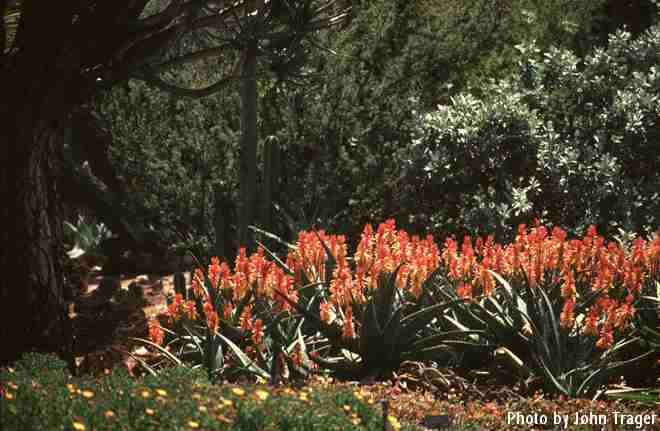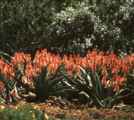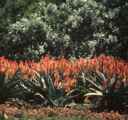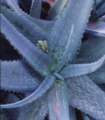This is a distinctive, robust form of A. camperi with thick, succulent, more or less straight leaves that differ from the typical, slender, gracefully arching leaves. The foliage is also more generously splashed with white spots than in most forms. The racemes are compact and subcapitate, with large flowers borne on shorter peduncles. While most A. camperi forms are late-flowering for us, i.e., in April or May, A. camperi ‘Cornuta’ flowers in March, when it always attracts attention in the Desert Garden because it is planted as a mass in front of the grayish-white foliage of the California native giant buckwheat, Eriogonum giganteum. Our plant was received by the Huntington as A. abbysinica Lam., a species rejected by Reynolds as imperfectly known. According to Reynolds, Salm Dyck (1817) used an illustration of A. camperi to represent A. abyssinica and it has misled all subsequent workers, including whoever first identified our plant. Berger described an A. eru var. cornuta in Das Pflanzenreich (1908). Reynolds considered A. eru to be a synonym of A. camperi but does not mention the epithet cornuta in any context. Nevertheless, this attractive and durable form has been cultivated in the Desert Garden since the 1930s and seems to match Berger’s description. It has survived several hard frosts over the years and grows equally well in sun or shade, though it flowers best in full sun. Its great garden utility seems to justify validating the epithet cornuta as a cultivar and distributing this plant more widely. Rooted cuts of HBG 92. $7.50.

Published in the Cactus and Succulent Journal, Vol. 75 (2), March - April, 2003


